Enrolling and using Token2 USB Security keys with UserLock MFA
 UserLock is a user login security system for on-premises Windows Active Directory designed by ISDecisions. It works alongside Active Directory to protect access to Windows systems. With specific and customizable user login rules and real-time monitoring, UserLock reduces the risk of external attacks and internal security breaches while helping to address regulatory compliance. UserLock is one of the few solutions existing on the market that allows implementing multi-factor authentication for logging on to Windows computers with Active Directory domain membership or standalone terminal servers.
UserLock is a user login security system for on-premises Windows Active Directory designed by ISDecisions. It works alongside Active Directory to protect access to Windows systems. With specific and customizable user login rules and real-time monitoring, UserLock reduces the risk of external attacks and internal security breaches while helping to address regulatory compliance. UserLock is one of the few solutions existing on the market that allows implementing multi-factor authentication for logging on to Windows computers with Active Directory domain membership or standalone terminal servers.
Previous versions of UserLock are allowing using Token2 programmable tokens as the second factor (TOTP protocol). Starting from version 11, UserLock natively supports Token2 T2F2 Security keys (second generation) by utilizing the HOTP functionality of these keys. In this article, we will show the procedures required to enrol and use Token2 security keys to log in to your Windows workstation protected with UserLock.
1. Enable MFA for a user
this step is done by the administrator of the system
In the UserLock management console, navigate to "Protected Accounts" and click on "Protect a new account" button.
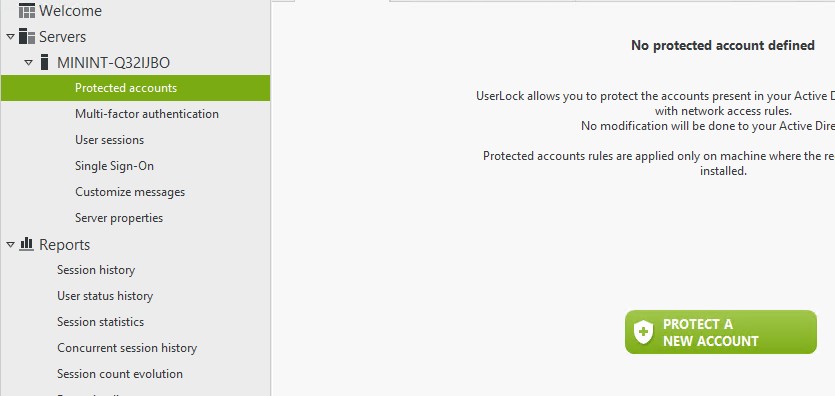
Then follow the wizard's instruction to protect a single account or a group. The steps below show enabling UserLock protection for "mfauser" local account on a standalone server as an example.
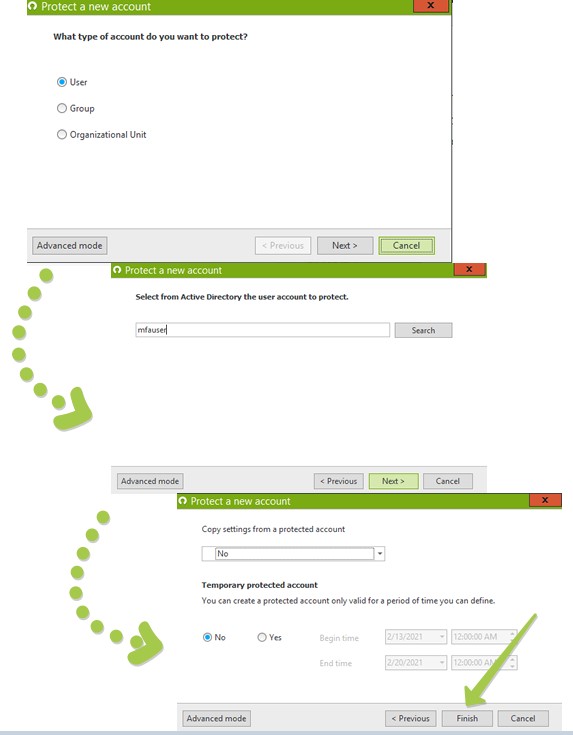
Then, double-click on the newly created protected account record to open its properties window.
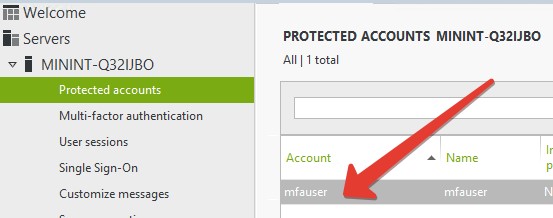
Scroll down to Multi-factor authentication section and configure settings for this user. On the screenshot below, we configured the user with the most strict settings: MFA is enabled for both workstation and server logins, and the second factor will be asked on every logon.
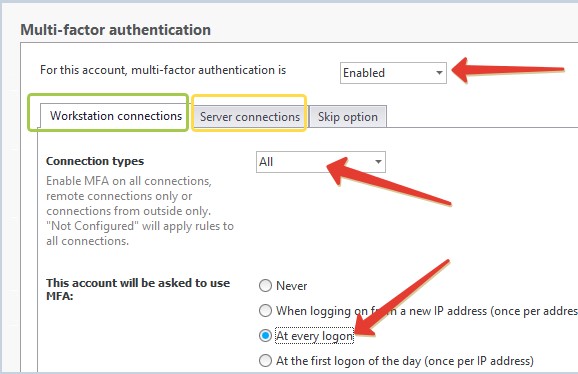
Click Apply/OK to finish this step. Now, the next time this user logs in, a wizard asking to configure the second factor will appear and the login will only be possible after this process is completed successfully.
2. Configuring the second factor for the user
this step is done by the user
After the user account's UserLock protection is enabled and MFA is activated, on the next logon attempt, UserLock will prompt the user to enrol one of the second factors. We will show the process of configuring a Token2 security key as the second factor.
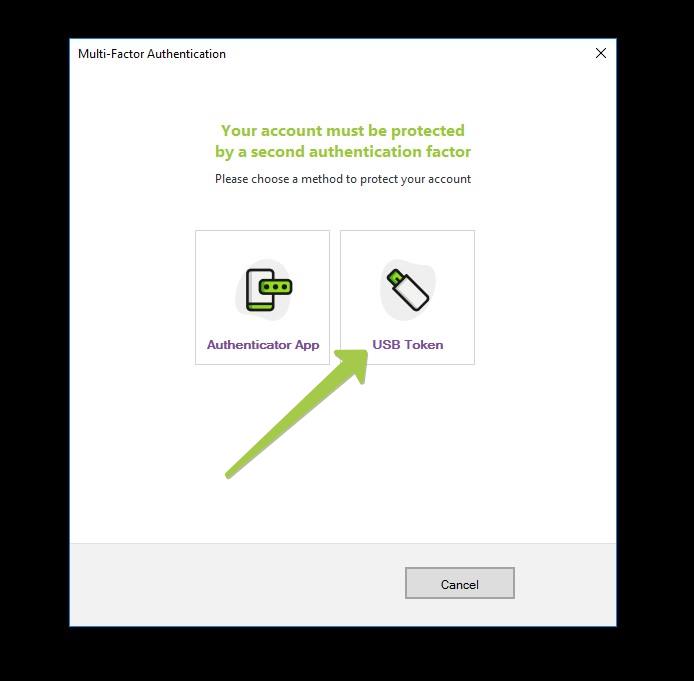
Choose USB token from the first window - make sure your Token2 key is plugged into a USB port before continuing.
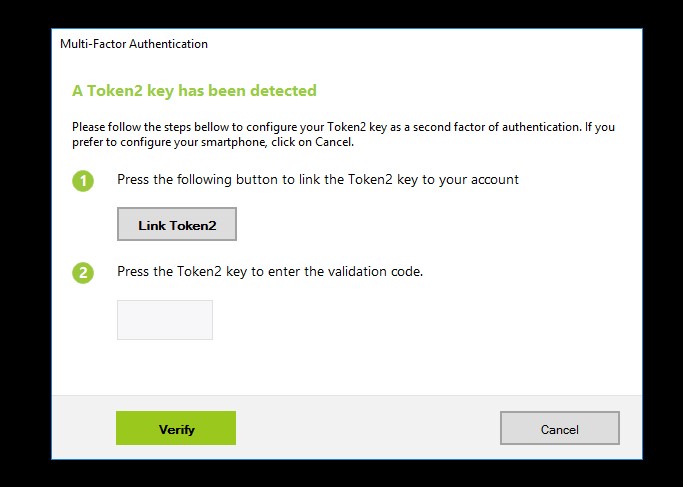
If a compatible Token2 key is detected, the system will show a "Link Token2" button to start the process.
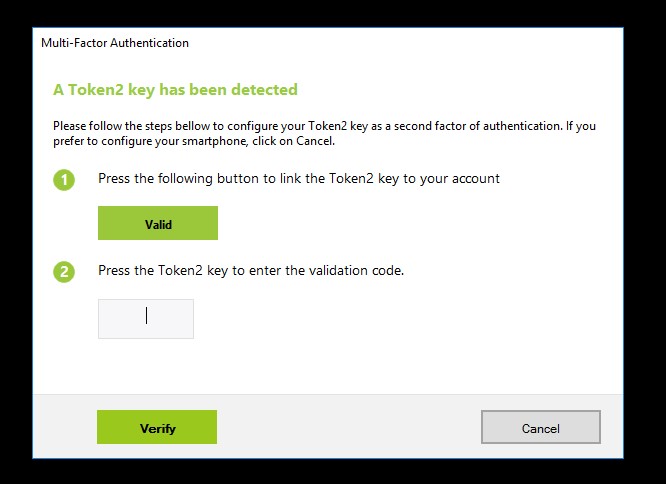
After successfully linking the security key, the button will transform to "Valid" message.
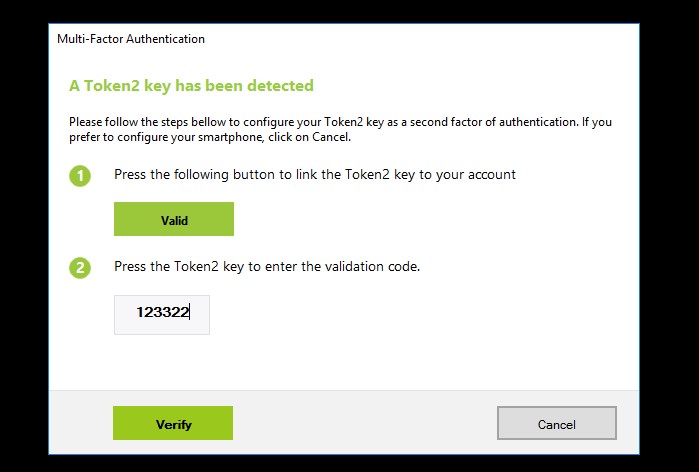
After this, set the cursor to the text field and press the button on the security key. There is no need to click "Verify" button as the key will send "Enter" keystroke to minimize user actions.

Upon successful enrollment, UserLock will prompt to enrol an additional factor for MFA (this can be a TOTP programmable token or an app, you cannot add a second USB Security key)
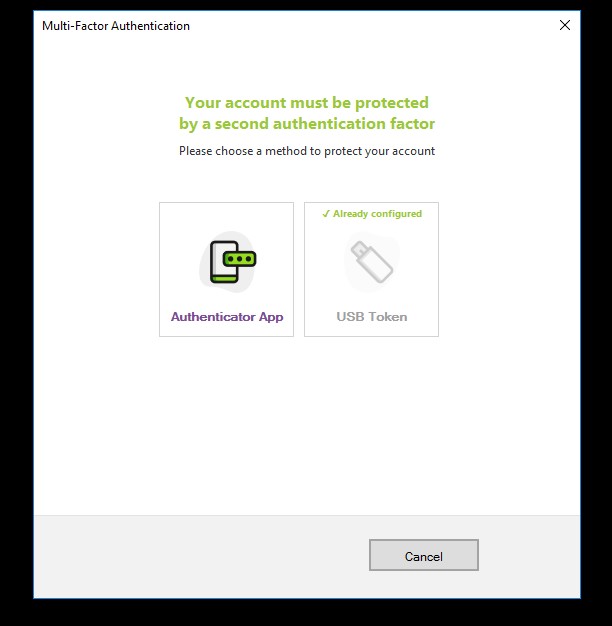
3. Logging in using a Token2 Security key
Once enrollment is complete, the MFA prompt will ask to enter the OTP.
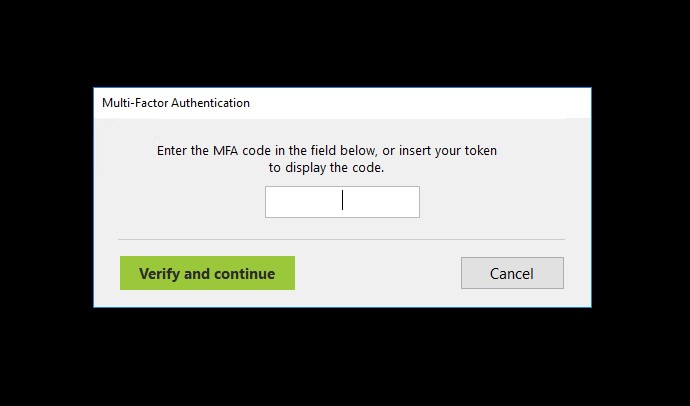
With USB security keys, users will only need to plug in the Token2 key to a USB port and press the physical button on the key . There is no additional action needed as the OTP will be sent together with "Enter" keystroke, which will submit the OTP automatically.
Frequently asked questions
1. Can I use this method for Remote Desktop logins?
Short answer: you can log in, but you cannot enrol.
Currently, the UserLock MFA enrollment wizard requires the security key to be plugged directly to the same machine in order to successfully complete the enrollment. Therefore, enrolling a Token2 Security Key over remote desktop is not possible. You will get an error as shown below:
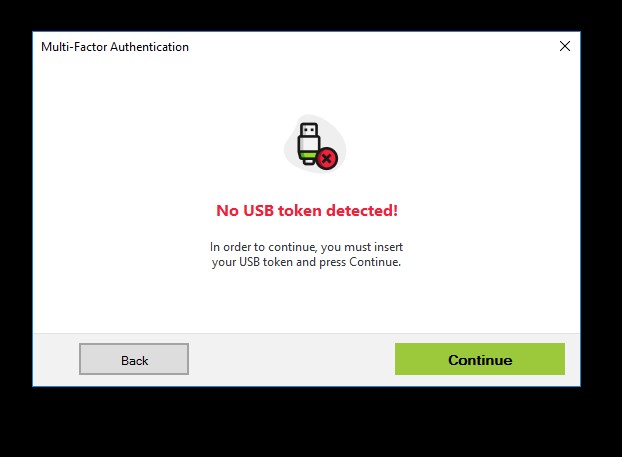
However, if the security key has already been linked to a UserLock protected account, subsequent logins are possible over RDP.
2. What is the difference between using Token2 TOTP programmable tokens and Token2 Security keys with UserLock MFA?
The main difference from the user experience point of view is that with the Token2 Security keys, users do not need to manually type in the one-time password (6 digits) as with TOTP (apps or tokens). Instead, to provide the second factor to complete the login process, the user will only have to plug in the device to a USB port and press the button. The only exception to this is when using our USB programmable tokens - they can also send the code over USB by leveraging the HID/Keyboard emulation feature.
Another aspect is the provisioning and login process differences, briefly shown in the comparative table below:
| TOTP Tokens | Security keys | |
| Provisioning requirements | An additional device is needed (for NFC models only, USB-programmable tokens do not need any additional devices) |
No additional device needed |
| Provisioning security level | Medium Secret key transferred to end-user |
High Provisioning done by UserLock directly on the device |
| Provisioning over RDP | Possible | Not possible |
| Logon over RDP | Possible | Possible |
3. Can I enroll more than one USB Security key?
No, currently UserLock only allows one security key to be associated per account. You can have a TOTP (token or app) as the alternative or backup factor.
4. Can I use the Token2 Security key for other services?
UserLock is using the HOTP functionality of our security keys and there is only one slot available for HOTP (this is due to HID feature as the password generated by HOTP is being sent by pressing the button on the device). However, as our security keys are FIDO2 compliant (and some models FIDO2 certified), you can use them on any FIDO2-compatible resources. These keys also feature TOTP generation via a companion app.
The models with UserLock native support are listed here . Also, it is worth mentioning the following aspects:
- If you use a system with AZERTY keyboard configured, you will have to keep "Shift" key pressed when pressing the button on the security keys. Our newer models (T2F2-AZ and T2F2-Bio) can be configured to use numeric keyboard instead, in such case, NumLock state should be on
- With T2F2-Bio the fingerprint protection does not apply to HOTP functionality. With UserLock, the fingerprint sensor will be used as a simple touch sensor to send the OTP digits (press the sensor for 2-3 seconds to send the digits).
Subscribe to our mailing list
Want to keep up-to-date with the latest Token2 news, projects and events? Join our mailing list!
